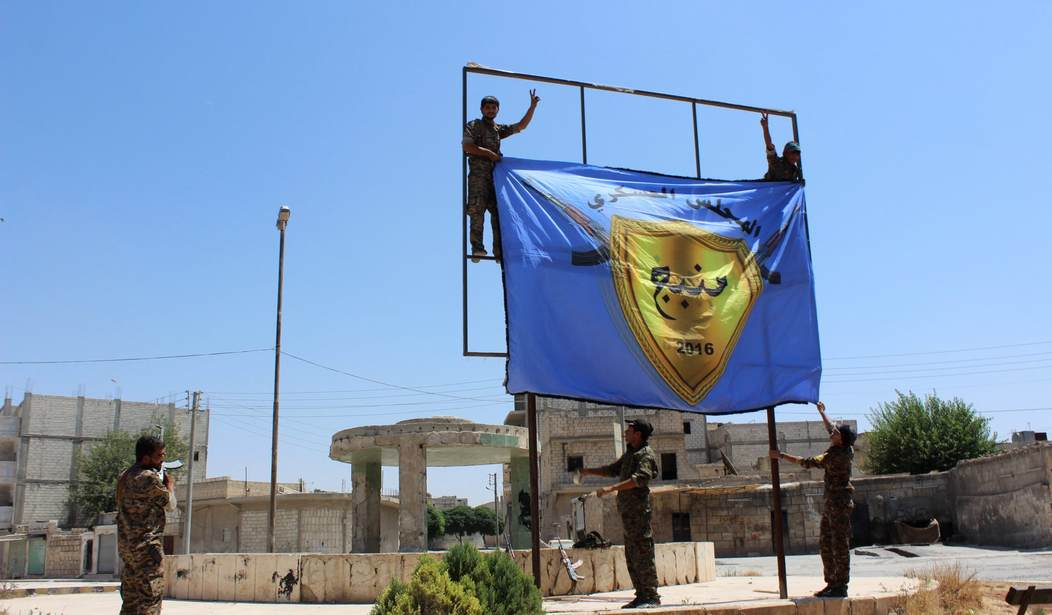ARLINGTON, Va. — Fleeing Islamic State fighters left schools and playgrounds rigged with explosive devices in the northern Syrian city of Manbij.
ISIS seized the city, which once had a population of more than 100,000, in January 2014. It was liberated in August by the Kurdish-led Syria Democratic Forces after a two-month battle. Men cut off their mandatory beards and women burned the burqa mandated by ISIS after the terrorists were kicked out of the city.
But they left dangers behind, with a special focus on places where children congregate.
Col. John Dorrian, spokesman for U.S. operations against ISIS in Iraq and Syria, told reporters via video from Baghdad today that civilians who were forced to flee Manbij have been returning to the city “in very large numbers.”
“Approximately 70,000 people now reside in Manbij, although 125,000 lived in Manbij before Daesh invaded. More than 3,000 families have benefited so far from efforts to distribute humanitarian aid, and efforts on ongoing to continue removing Daesh boobytraps and IEDs,” Dorrian said.
ISIS planted “a significant number of explosive hazards in the schools and schoolyards, and nearly 100 explosives have been removed, transported to a safe area outside the city, and destroyed.”
“Unfortunately, before this work could be done, there were three casualties to Manbij residents caused by explosives in these school areas,” the spokesman added. “Of the 45 schools in the city before Daesh arrived, seven were completely destroyed and another seven partially destroyed.”
Dorrian was asked what impact ISIS’ increased use of flying IEDs — small drones carrying explosives, as one that killed two Kurdish soldiers and injured two French paratroopers in Irbil on Oct. 2 — could have on coalition operations moving forward.
“The implications of this are certainly not an existential threat and not something that’s militarily significant in that it’s going to stop anything that needs to happen from happening,” he replied.
Coalition forces are preparing an operation to liberate Mosul, Iraq, from ISIS. Since seizing the country’s fifth-largest city in June 2014, ISIS has “had an opportunity to dig some pretty elaborate defenses and put up a lot of booby traps,” Dorrian noted.
“They’ve loaded the city with improvised explosive devices, booby traps, tunnels, all sort of things. And you know, given the size and scope of that city, it’s going to take some time to restore normalcy there.”
After the liberation of Mosul, Dorrian said, “what we will see is Daesh reverting back to what they really are, which is a terrorist organization and perhaps an insurgent threat.”
“And what that means is we can expect them to continue to, you know, conduct terrorist-style attacks in order to try and prove their relevance. We’ve seen them continue to do propaganda, although a lot of that propaganda has been trailing off for a variety of reasons, including the fact that many of those responsible for the propaganda are no longer with us,” he continued. “And it’s very difficult for them to maintain any type of farce as if living under Daesh rule is a good thing because the places where they’re in charge, they’re under constant pressure and they’ve wrecked the place and they’re under a lot of pressure from strikes.”








Join the conversation as a VIP Member